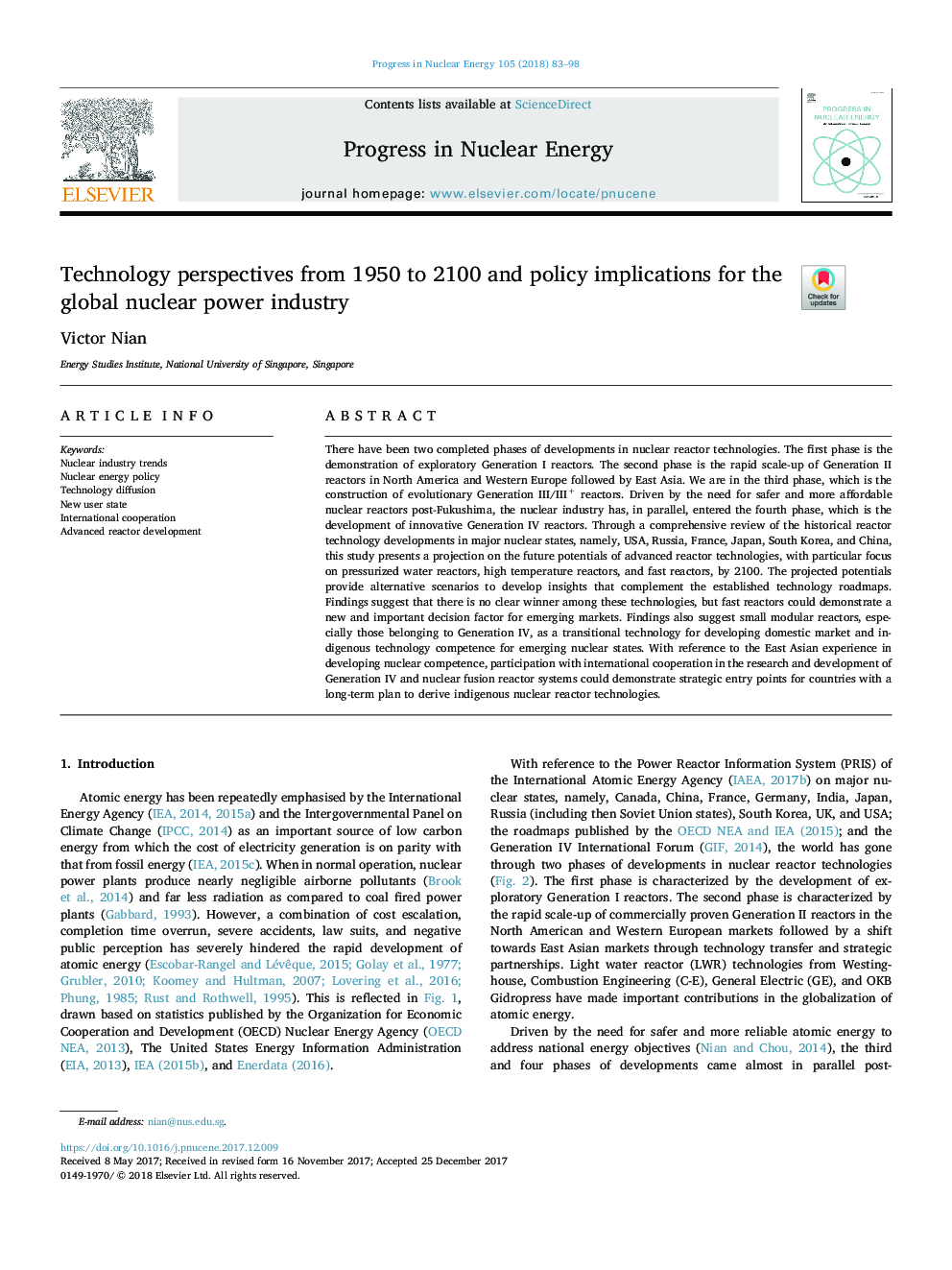| Article ID | Journal | Published Year | Pages | File Type |
|---|---|---|---|---|
| 8084278 | Progress in Nuclear Energy | 2018 | 16 Pages |
Abstract
There have been two completed phases of developments in nuclear reactor technologies. The first phase is the demonstration of exploratory Generation I reactors. The second phase is the rapid scale-up of Generation II reactors in North America and Western Europe followed by East Asia. We are in the third phase, which is the construction of evolutionary Generation III/III+ reactors. Driven by the need for safer and more affordable nuclear reactors post-Fukushima, the nuclear industry has, in parallel, entered the fourth phase, which is the development of innovative Generation IV reactors. Through a comprehensive review of the historical reactor technology developments in major nuclear states, namely, USA, Russia, France, Japan, South Korea, and China, this study presents a projection on the future potentials of advanced reactor technologies, with particular focus on pressurized water reactors, high temperature reactors, and fast reactors, by 2100. The projected potentials provide alternative scenarios to develop insights that complement the established technology roadmaps. Findings suggest that there is no clear winner among these technologies, but fast reactors could demonstrate a new and important decision factor for emerging markets. Findings also suggest small modular reactors, especially those belonging to Generation IV, as a transitional technology for developing domestic market and indigenous technology competence for emerging nuclear states. With reference to the East Asian experience in developing nuclear competence, participation with international cooperation in the research and development of Generation IV and nuclear fusion reactor systems could demonstrate strategic entry points for countries with a long-term plan to derive indigenous nuclear reactor technologies.
Related Topics
Physical Sciences and Engineering
Energy
Energy Engineering and Power Technology
Authors
Victor Nian,
